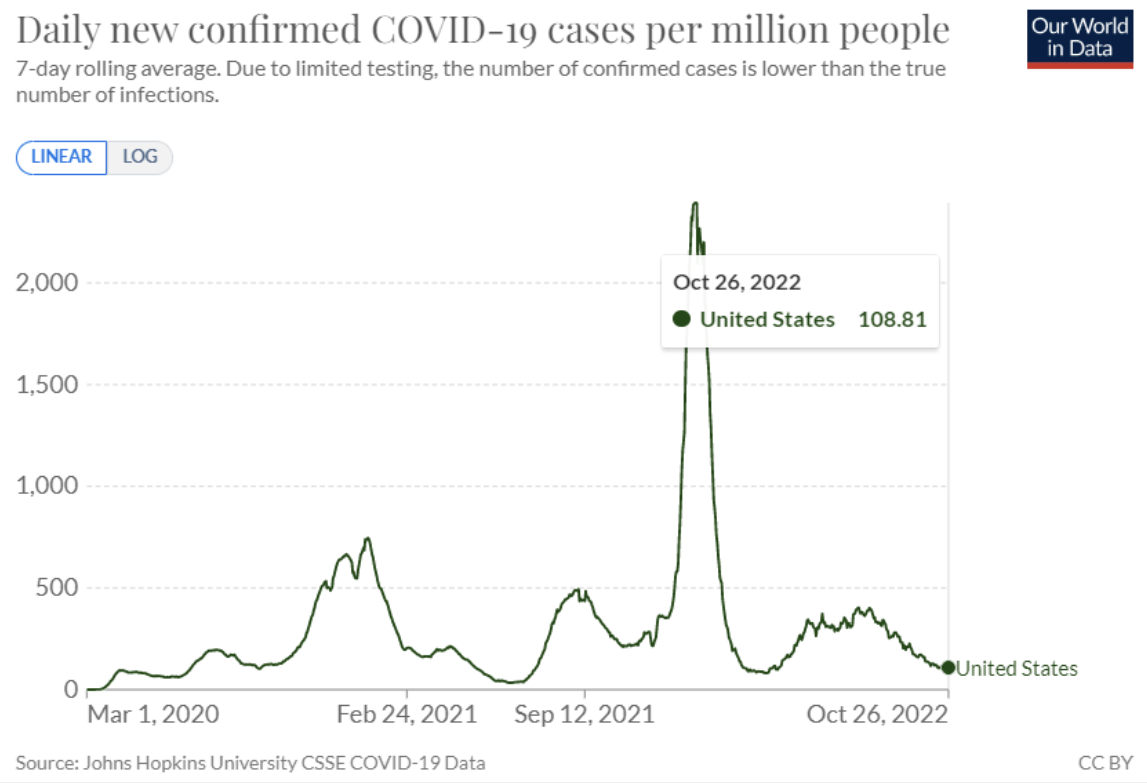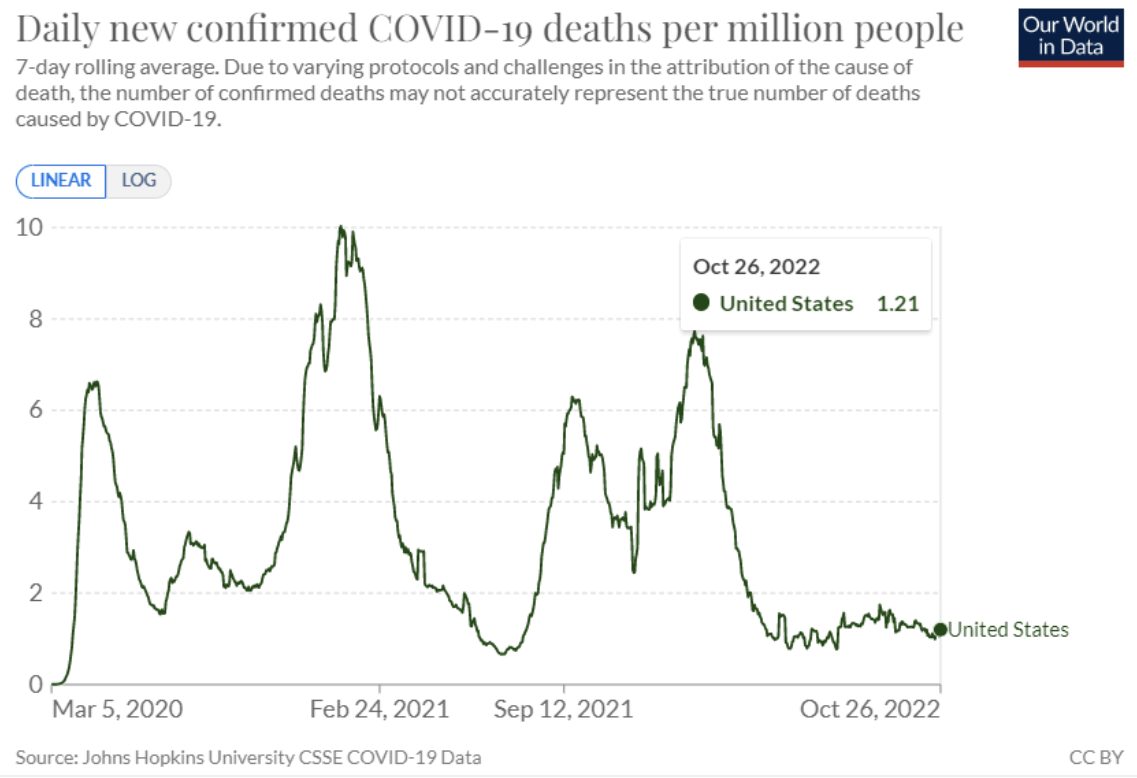Last year’s spike in COVID-19 cases, deaths and hospitalizations has faded from the public’s focus, and for an obvious reason. The numbers have fallen and worries about other issues – inflation, the economy, energy supplies, next week’s elections, to name a few – are now front and center. But with the winter approaching, is a rebound in pandemic troubles lurking?
Infections are still low, according to CDC data. But the virus cycle tends to rebound around Thanksgiving, typically the largest travel holiday of the year in the US. Another factor: indoor gatherings increase as colder weather sets in. Does that mean the 2022-2023 season will see new spikes in COVID-19 numbers?
The good news is that a larger percentage of the population has been vaccinated, including booster shots. “We are much better off now,” Dr. Anthony Fauci, President Biden’s chief medical advisor for the pandemic, recently observed. “But we are not where we need to be if we are going to, quote, ‘live with the virus.’”
For now, at least, the data looks encouraging, but these are still early days.
Here’s how the state of the pandemic stacks up in the US on three key COVID-19 metrics: cases, new hospital admissions and deaths, based on data compiled by OurWorldInData.org.
Let’s start with cases, which are close to the lowest pace since the spring, as of Oct. 26.

New hospital admissions, however, are middling, relative to numbers for the year so far.

The trend in COVID deaths looks more encouraging in that the fatalities per million people in the US is holding near the lows recorded since the pandemic started.

The question, of course, is whether the post-Thanksgiving numbers will spike? Unclear, but as the third winter of the pandemic approaches, there’s a case for cautious optimism, at least compared with 2020 and 2021.
